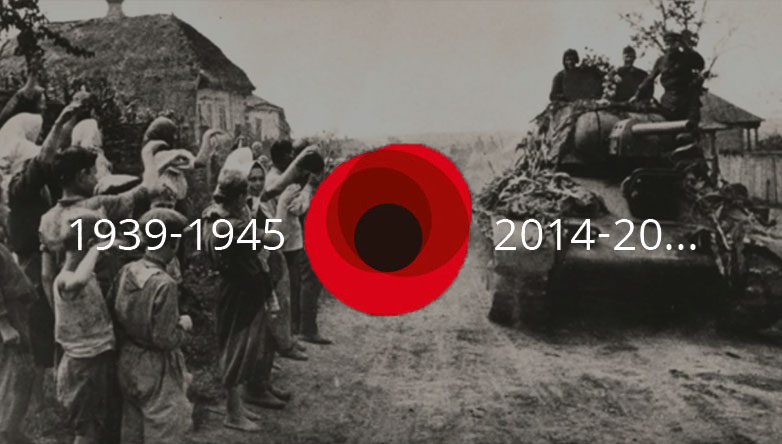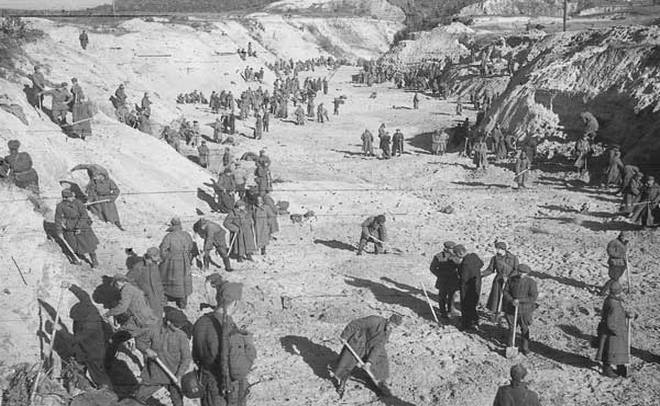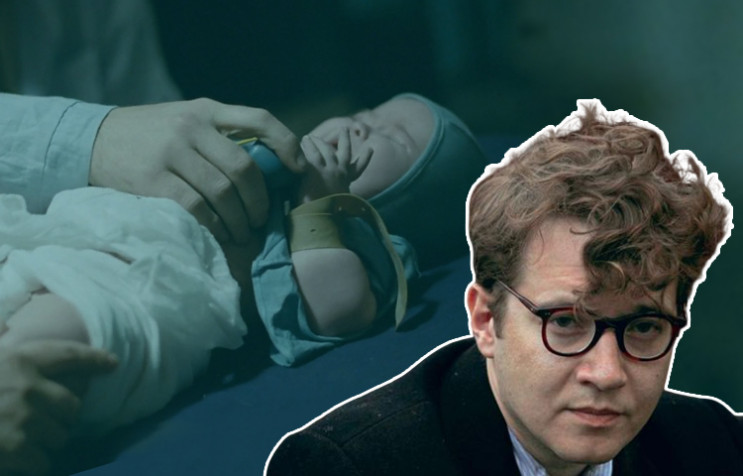Just a reminder: Nazi collaborator Vladimir Katriuk (killed innocent ppl in Khatyn in 1943) still lives in Quebec https://t.co/Ciu5R69ud2
— Russia in Canada (@RussianEmbassyC) May 6, 2015
By no means is Katriuk the only Ukrainian accused of collaborating with the Germans during WWII. Following Stalin's decisive collaboration with Hitler in forming their deadly Nazi-Soviet Alliance in 1939, Ukrainians also participated in the Soviet mode of collaboration. On 17 September 1939 the USSR invaded and annexed Eastern Poland into the "Soviet sphere of influence" under the terms of the Molotov-Ribbentrop Pact. During this period of alliance and cooperation between Hitler and Stalin, a series of meetings and conferences between representatives of the USSR and Nazi Germany were held to discuss how to deal with their common enemies. The best known of these meetings were the Gestapo-NKVD Conferences. In one such meeting on 29 April 1940, representatives of the Ukrainian SSR met with Alfred Schwinner from the German consulate. The “Jewish question” was on the agenda:It sometimes happens that Westerners know little about Ukrainians and Lithuanians except their reputation as anti-Semites and willing collaborators in the Holocaust
![Still from the movie “The Soviet story” showing an excerpt from a German archival document which in part reads “The Soviet representatives started with discussion of the Jewish question. The Germans expressed their point of view that Jews are not a nationality to them, and they disagree that it was a question of race and religion, however [The USSR] acknowledged that the German government had the right to choose refugees ... ”](http://euromaidanpress.com/wp-content/uploads/2015/07/Screenshot-of-Soviet-Story-made-2015-06-15-at-10.20.44-PM.png)
Still from the movie “The Soviet Story” showing an excerpt from a German archival document which in part reads “The Soviet representatives started with discussion of the Jewish question. The Germans expressed their view that Jews were not a nationality to them, and they disagreed that it was a question of race and religion, however [The USSR] acknowledged that the German government had the right to choose refugees ... ”
... [S]ince the latest murderous 'purge' in the Ukraine, no one in the West [Ukraine] wants to become part of the Kremlin satrapy which continues to bear the name of Soviet Ukraine. The worker and peasant masses in the Western Ukraine, in Bukovina, in the Carpatho-Ukraine are in a state of confusion: Where to turn? What to demand? This situation naturally shifts the leadership to the most reactionary Ukrainian cliques who express their “nationalism” by seeking to sell the Ukrainian people to one imperialism or another in return for a promise of fictitious independence. Upon this tragic confusion Hitler bases his policy in the Ukrainian question.”But what was Hitler’s policy and how did it impact the Ukrainian peoples? On 6 February 1933, a report was dispatched from the German consulate based in Odesa to Konstantin Von Neurath back in Berlin telling the tale of Ukraine's forced famine, the Holodomor, confiscation of grain from the peasants by "shock" brigades, how peasants were "handing over everything in their possession" and how the Soviets were failing to fulfill grain requisition plans. [4] Stalin had completed his most efficiently brutal genocide by the time Hitler assumed power in Germany, when the genocide of Jews and Slavs was but a concept yet to be fulfilled.
Nazi propaganda exploited Soviet crimes for cynical self-service. How Nazi propaganda would later treat for example the Katyń massacre is reasonably well understood. [5] But the Holodomor also appeared in Nazi propaganda, albeit in garbled form. In a speech on September 12 1936, Hitler used the image of the Starving Soviet to indict general Marxist-ideological failings and compared it to his own plans.Ukraine was swallowed whole during Operation Barbarossa, which helped ensure that some of the worst atrocities of the Holocaust, happened on Ukrainian soil.
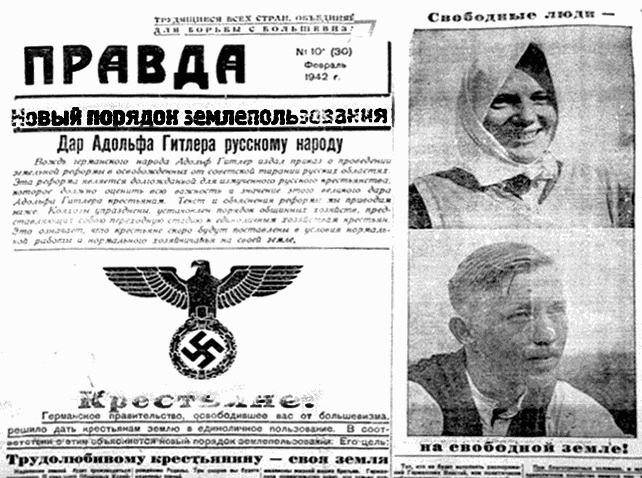
Scooping off the agricultural surplus in the Ukraine for the purpose of feeding the Reich is therefore only feasible if traffic in the interior of the Ukraine is diminished to a minimum. The attempt will be made to achieve this:When we shoot the Jews to death, allow the POWs to die, expose considerable portions of the urban population to starvation and in the upcoming year also lose a part of the rural population to hunger, the question remains to be answered: who is actually supposed to produce economic values? [6]
- by annihilation of superfluous eaters (Jews, population of the Ukrainian big cities, which like Kyiv do not receive any supplies at all);
- by extreme reduction of the rations allocated to the Ukrainians in the remaining cities;
- by decrease of the food of the farming population. [...]
Regardless of Laykauf’s short term thinking, in the long run the answer to his question was going to be the Germans themselves. The very concepts of “Ukraine” as a state and “Ukrainian” as a people were going to be eliminated, and the territory of Ukraine, like the territory of Russia was going to become Lebensraum - Germanised and colonised “Living Space” for the German volk. To this end, under German rule the Ukrainian lands were going to be partitioned, the largest portion of which (with over 17 million inhabitants) came in the form of a civil administrative territory approved by Hitler on August 21 1941 designed to oversee the Germanification of most of Western Ukraine and including territory outside of Ukraine's contemporary borders - The Reichskommissariat Ukraine. It was to be headed by Erich Koch, a man who is on record as having stated, "If I meet a Ukrainian worthy of being seated at my table, I must have him shot." [7]Under the Generalplan Ost, the German master-plan for colonisation of the East of Europe, 65% of the inhabitants of western Ukraine would either be starved to death or scheduled to be deported to Siberia.
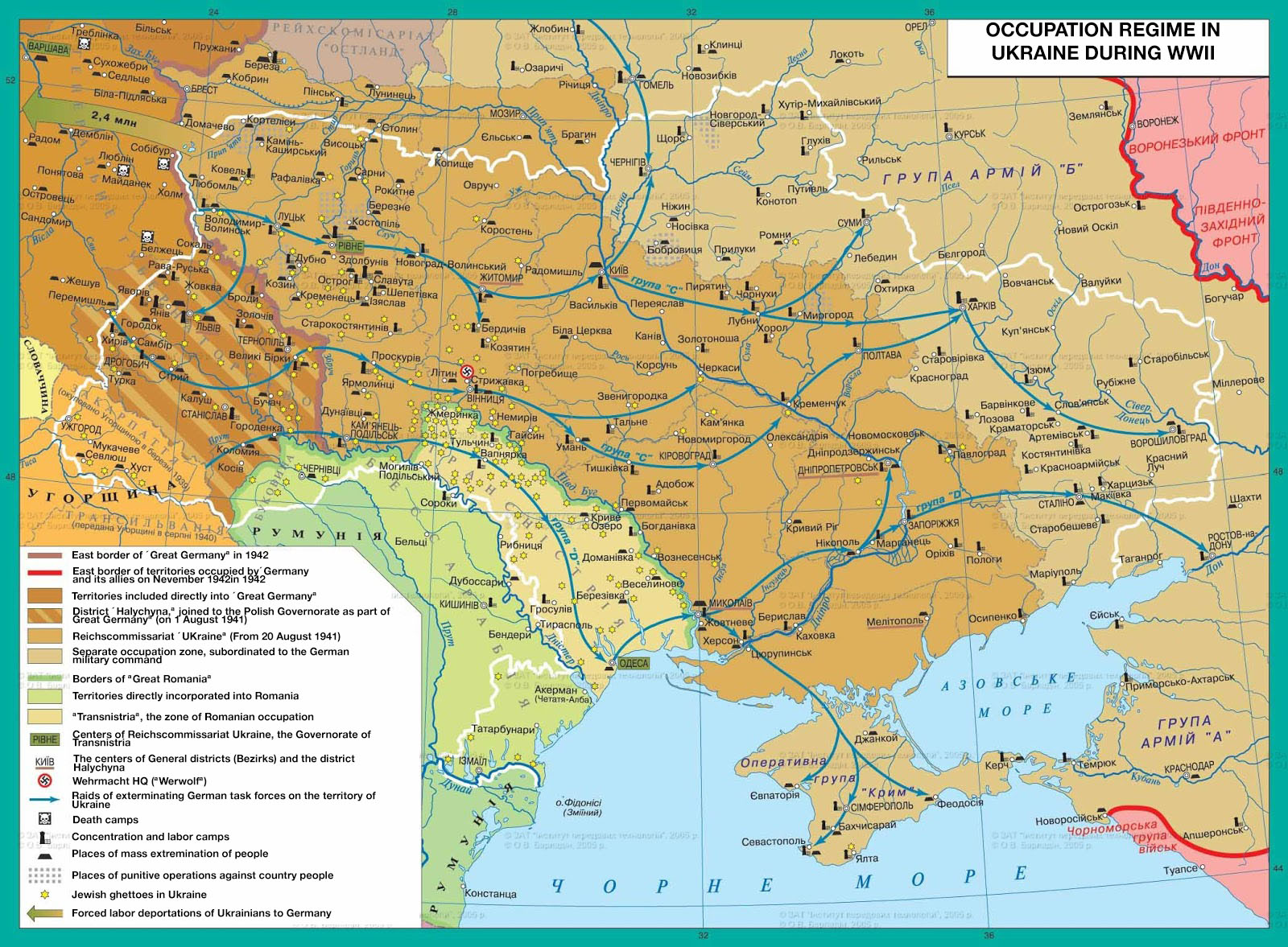
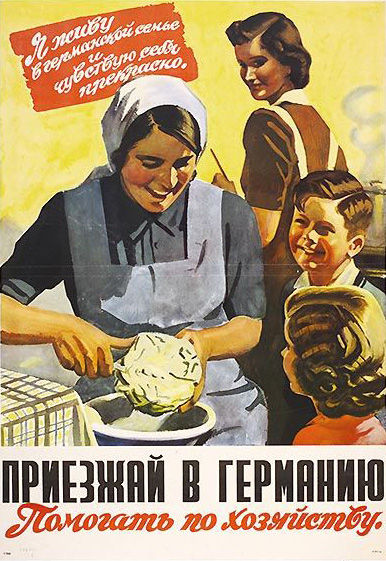
Trailer for “A Mentsh.” A documentary film made in the Yiddish language about the tragedy of Lviv’s Jews in WWII and a man who wants to keep the memory of Lviv’s Jews alive. The term “a Mentsh” refers to a good person full of love and empathy.
Throughout the German occupation, organised pogroms became a sad feature across the Ukrainian countryside. By far and away the most infamous atrocity of the Holocaust on Ukrainian soil is the Babyn-Yar massacre. On September 19 1941 the Germans captured Kyiv. Here as elsewhere on the eastern front, the retreating NKVD put into practice their scorched earth policy by dynamiting and setting fire to buildings deemed useful to the enemy. The Germans made no attempt to put these fires out. Instead they were used as the pretext to round up Kyiv’s Jews.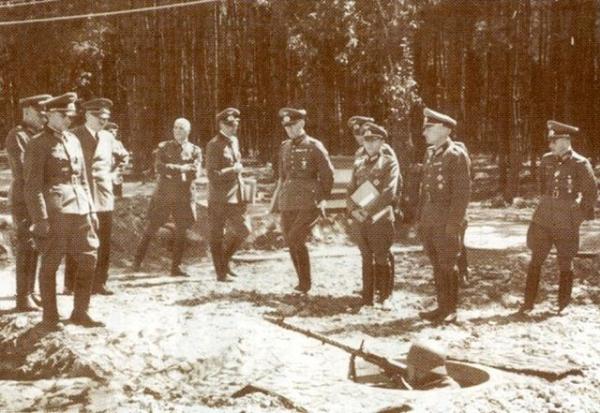
Shostakovich’s Symphony No13
Both Yevtushenko and Shostakovich were pressured by the Soviet state to change their works of art so that “Jewish suffering” became “Soviet suffering” and thus maintain the state line that denied the special nature of the Holocaust in Ukraine against the Jews of Ukraine. [12] It was only after the collapse of the USSR that the Jewish victims at Babyn-Yar could be properly recognised.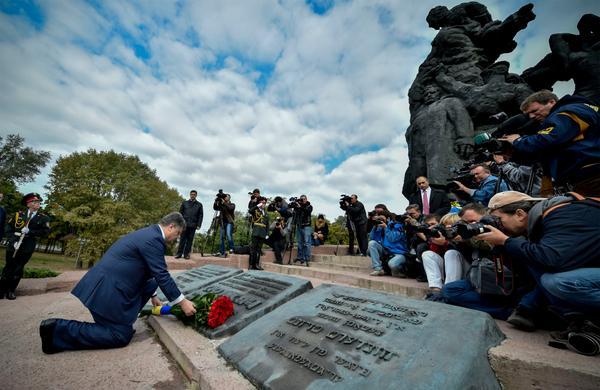
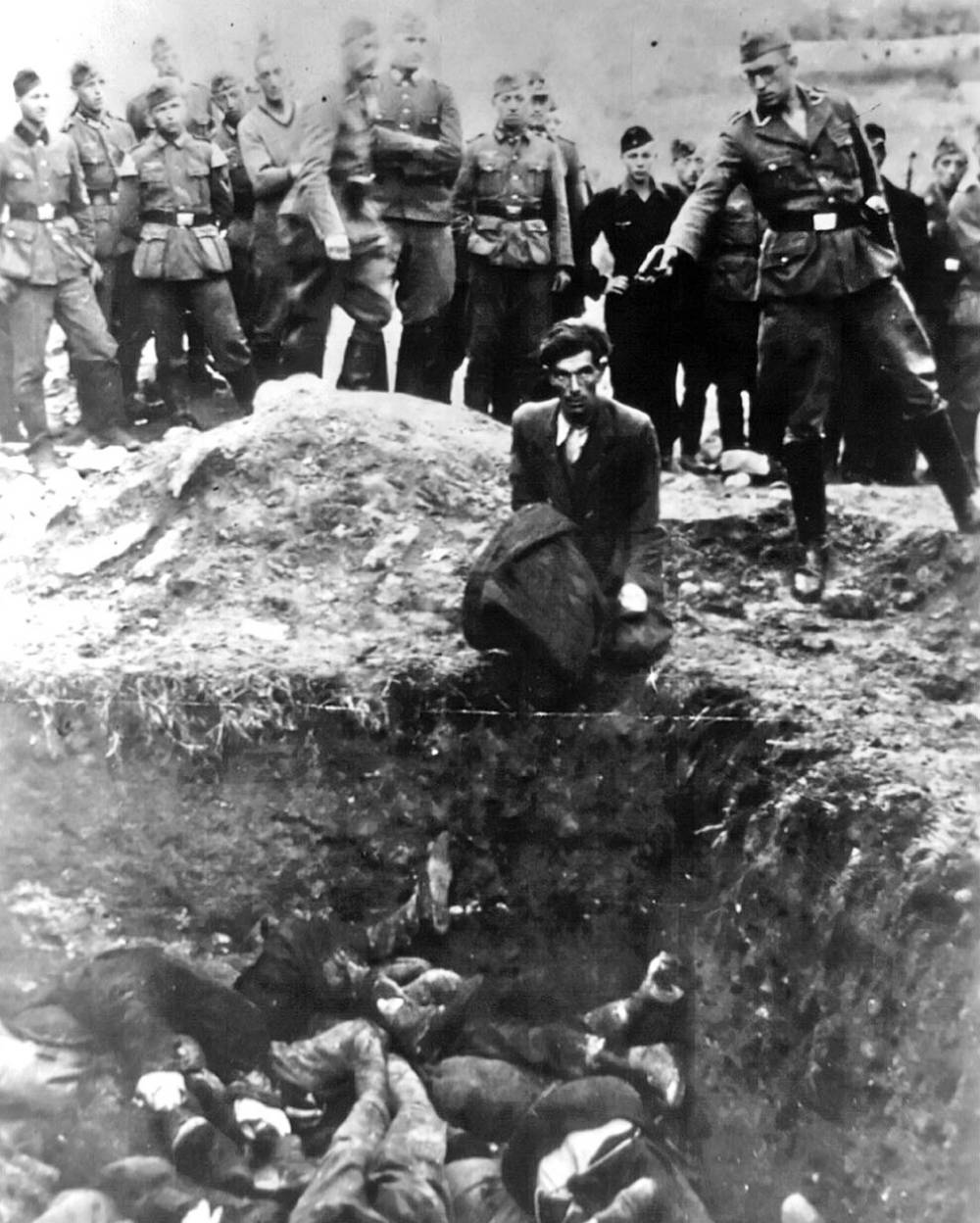
Just beyond the north east of Ukraine lies the Russian city of Bryansk. On October 6 1941 this city was captured by the Germans, after which local Russian nationalist collaborators actually went beyond their Ukrainian counterparts and quickly established a semi-autonomous “Lokot autonomy.” Arguably the most famous of the Lokot collaborators was Bronislav Kaminski who would go on to earn notoriety for his role in the crushing of the Warsaw uprising of 1944. The “Lokot autonomy” only lasted until August 1943, by which time the whole area it covered had been rendered “Jew-free” and remarkably without the Wehrmacht supervision or organisation that was present in the Holocaust in Ukraine. Another telling statistic of note is the numbers of “Righteous Among the Nations.” Russia only has 197 persons recognised for their heroism in saving Jews from slaughter during the Holocaust, compared to Ukraine which currently has 2,515 such persons. Only Poland, France and the Netherlands have more!60% of Ukraine's Jews had perished in the Holocaust
Whilst Putin and his ilk continue to point out that Ukrainians made the mistake of welcoming the Germans as liberators, they seem to forget that it ever happened in Russia. The reality is different. This footage shows a parade of the Wehrmacht and local Nazi collaborators and supporters held in Pskov on June 22 1943. Even so, regardless of how useful a Russian or a Ukrainian could be to the Germans in the interim, when it came to the matter of exterminating the Jews of Europe, Russians and Ukrainians were nonetheless still considered “sub-human” to the Germans.
If there is one Ukrainian nationalist that has earned infamy over and above all others, it is Stepan Bandera.
Even before WWII Bandera’s name had been associated with bloodshed in Poland, notably the assassination of the Polish politician Bronisław Pieracki in 1934, for which Bandera was imprisoned at Wronki. Before his imprisonment Bandera was already climbing up the ranks of the OUN (Organisation of Ukrainian Nationalists) which up until 1938 had been led by Yehven Konovalets. Konovalets' assassination by an NKVD operative quickly prompted a leadership struggle between Stepan Bandera and another somewhat more conservative nationalist, Andriy Melnyk. The followers of each would eventually become known as the OUN(b) an OUN(m). Not that Wilhelm Canaris, head of German military intelligence (Abwehr) initially cared too much about this, as the OUN received cash from him in exchange for intelligence about Poland. The Abwehr cash given to the OUN is rather well known, even if others in the Nazi leadership such as Alfred Rosenberg were more fickle about funding the OUN. [14] In September 1939 Bandera managed to escape from Wronki after which he stayed in Kraków where he built his personal base of followers and plotted an armed uprising in Soviet-occupied Ukraine. On 30 June 1941 after the Germans had marched into Lviv, Bandera’s OUN(b) proclaimed the “Declaration of Ukrainian Independence,” Point 3 of which proclaimed that the new Ukraine would work with Nazi Germany. These facts have given Bandera the reputation of being a would-be Ukrainian Quisling. But the Germans were not in any mood to tolerate a new independent Ukraine, regardless of how much it may or may not have collaborated with Hitler’s wishes. There would not even be an equivalent of the “Lokot autonomy” here, and so on 6 July 1941 Bandera was arrested. He would eventually be placed into the Sachsenhausen concentration camp in Germany. As for Melnyk, he would also end up at Sachsenhausen after trying to proclaim an independent council in Kyiv. Despite his imprisonment, how culpable is Bandera for the actions his followers undertook during his imprisonment? One of the most notorious acts of bloodshed that the Bandera name is associated with are the massacres of perhaps up to 100,000 Poles (and Ukrainians) in Volhynia and Eastern Galicia in 1943-44. The blame for these massacres usually falls on both the OUN(b) and the Ukrainian Insurgent Army (UPA). Although the OUN and UPA weren’t technically one and the same, many OUN members served as UPA soldiers and officers, and vice versa. What this means is that those in the UPA who took part in the Volhynia and Eastern Galicia massacres would still have been Bandera followers. According to this analysis, Bandera wasn’t directly involved, which may be true. But if it can be argued that those who initiated the massacres believed that in doing so they were exercising a spirit of Bandera which demanded a Ukraine free of Poles, then Bandera cannot be completely excused from blame for imbibing that spirit. [15] What happened in Volhynia and Eastern Galicia remains an uncomfortable history for Ukrainians and Poles to read, but even here, there are some genuine Ukrainian heroes. Romuald Niedzielko has documented over 1,340 cases of Ukrainians who risked their own lives to save Poles from these massacres. Despite these massacres which have long soured Polish-Ukrainian relations, there is still good hope that true reconciliation between Poland and Ukraine is possible in the same way Germany now has good relations with Poland and Israel. Last year Poroshenko tried to urge that reconciliation by insisting Poles and Ukrainians must forgive each other for past mistakes. Now there is a planned joint Polish-Ukrainian Historical Commission to investigate the massacres. It is in continuing efforts to recognize its history that Ukraine has recently passed what some view as controversial "history laws" recognising the UPA as fighters for Ukrainian independence. Whatever flaws of Ukrainian historiography critics see in these laws, for example, that they may prohibit academic discussion of the nastier side of the UPA, for example, Ukraine is still in a far, far superior position than Russia is currently in facing the nastiest aspects of its history. It is a history of Ukrainians serving as “Hilfswilligers” and including “Trawnikis,” such as Ivan “the terrible” aka “John” Demjanuk who served as a concentration camp guard at Sobibor. Ukrainians also served in General Vlasov’s “Russian Liberation Army” to the Waffen SS Galicia division, formed in 1943 as the eastern front was sagging and as the Germans were desperately looking for any allies even if it meant temporarily compromising on their “racial principles” to try and stop the Red Army from advancing. In 1944 this Waffen SS division found itself annihilated near Brody, after which its battered remains were re-organised and sent to conduct anti-partisan activity in the Balkans and on the Austrian border. In 1945 the remnants of this division surrendered to the western allies. Other remnants were sent to France for retraining and to do likewise to the French resistance, but here they proved less than reliable for the Germans as many Ukrainian servicemen simply defected (or attempted to defect) to the French resistance. For Osyp Krukovsky, joining the French resistance completed a circle of military service which saw him fight on both sides of the war. He had originally enlisted into the French Army on September 7 1939. [16] In 1944, both Melnyk and Bandera were released by the Germans in the vain hope that both would conduct anti-Soviet activities and thus slow the Red Army advance in Ukraine. Also released that year from German captivity was Pavlo Shandruk who had served with the Poles in September 1939 and who won a Virtuti Militari, Poland’s highest military decoration for bravery against the Germans before being imprisoned. Shandruk was to chair a “Ukrainian National Committee,” a German puppet government but which was only recognised on 12 March 1945. But Shandruk had other ideas. After reorganising the Ukrainians serving in the Wehrmacht such as the Waffen SS Galicia into a “Ukrainian National Army” he promptly had them move westward to surrender to the western allies in both Germany and Italy. Shandruk also lobbied Władysław Anders to have them recognised as pre-war Polish citizens (regardless of whether this was true or not) so that they would be saved from Soviet deportation and the Gulag camps. As with the Ukrainians who served in the French Foreign Legion, the dark question of “did this allow war criminals to avoid prosecution?” still looms over the men Shandruk spared from the Gulag, particularly over the men who served in the Waffen SS Galicia. In 2013 the pursuit of this question led to a rather bizarre situation over two men currently living in the US who by simple coincidence happen to share the same name Michael Karkoc.Conclusion
In Ukraine, the era of Soviet-influenced historiography is now coming to an end. As a result, the Holocaust that the USSR denied for so long, as well as the true role of Ukrainians in WWII - good and bad, can finally have a chance to be openly discussed and given proper contextualisation. As I typed these words this BBC news article was published about the taboos concerning the Holocaust created under Soviet rule now being lifted in Ukraine. As a result, Holocaust memorials are being erected in Ukraine and younger generations will have the chance to learn facts that their parents and grandparents were denied under Soviet education.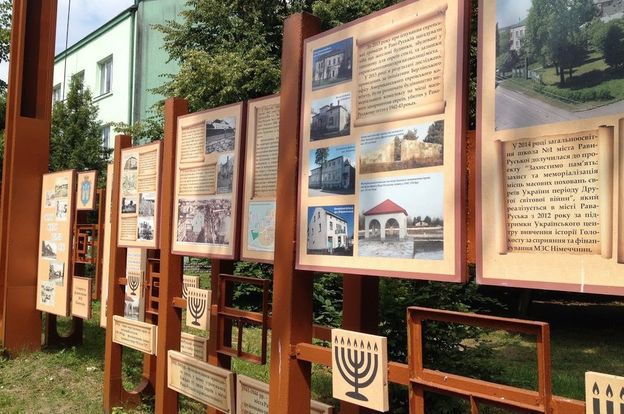
Jan 12, 42: “Russia’s defeat should provide Ukraine with opportunity to join Europe’s political system” – Ukrainian nationalists to Hitler
— RT's WWII Tweets (@Voina_41_45eng) January 12, 2015

